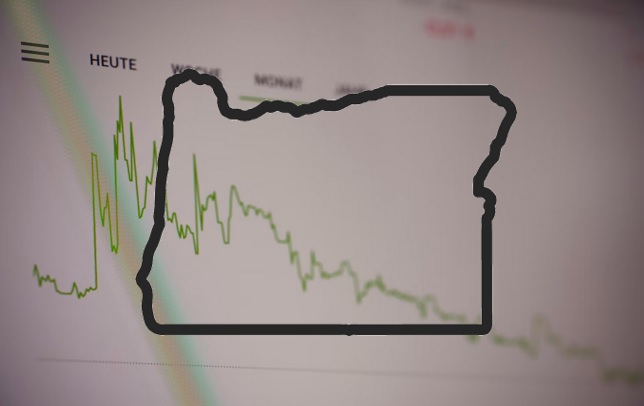 [5]
[5]
By Oregon Business & Industry
The Oregon Office of Economic Analysis [6] on Nov. 20 released the state’s quarterly economic and revenue forecast. The report provides information used for budgeting purposes by legislators and other state leaders. It also informs taxpayers about the likelihood and size of an income tax “kicker.”
The economic outlook: The health of Oregon’s economy is “moderate,” according to the report. Oregon jobs and income are in the middle of the pack across all states, though slightly below the median. The overall economic forecast is “stable” with an expected modest rebound in migration leading to slow population gains and continued full (or nearly full) employment.
The revenue picture: The November forecast – the first in many years without former state economists Mark McMullen and Josh Lehner [7] – predicts that the state will have nearly $1 billion more to spend during the 2023-25 biennium than anticipated by the previous revenue forecast. In total, the state is expected to collect more than $2.8 billion more during current biennium than expected when the Legislature adopted the biennial budget at the close of the 2023 legislative session.
By the numbers:
- The latest forecast predicts that the state will collect $947 million more tax revenue during the 2023-25 biennium than anticipated by the previous revenue forecast, released just a few months ago.
- The state is now expected to collect $2.84 billion more in tax revenue than lawmakers expected when they adopted the 2023-25 budget.
- The personal income tax kicker is now estimated to be $1.8 billion, which taxpayers will receive as a credit on their 2025 tax returns, filed in early 2026.
- The corporate kicker is expected to be just over $1 billion, though the state will withhold that revenue for education.
- Corporate activity tax revenue has been revised downward by $5.9 million for the 2023-25 biennium. Nevertheless, CAT revenue for this biennium is expected to be roughly $2.89 billion.
Read more:
- Read the entire economic and revenue forecast here [8].
- Read the slide presentation accompanying the forecast here [9].
- Read the executive summary of the forecast here [10].
Two Additional Takeaways from the Revenue Forecast
Media coverage of Oregon’s quarterly economic and revenue forecast focused largely on a few basic items: projected revenue, the size of the kicker and, to a lesser degree, newly arrived Chief Economist Carl Riccadonna’s efforts to predict revenue more accurately and, therefore, minimize kicker payouts.
There’s nothing wrong with this focus – the basics are the basics for a reason. However, two additional topics should be noted.
First, Oregon’s lopsided employment picture. Over the past year, Oregon has gained 22,700 jobs, but Riccadonna characterized the distribution of job gains as a “weak spot,” noting that the breadth of job creation “has been very narrow.” The slide here [11] illustrates his point: Lots of new jobs in government and the service sector (private education and health care). And everywhere else? Job losses.
- Here’s what Riccadonna had to say: “We see losses in categories like manufacturing and construction. As we talk about the quality of jobs, those are typically viewed as high-quality jobs that have higher benefits, pensions, health coverage compared to other industries.”
- The takeaway: Oregon policymakers must focus on creating a business environment that will increase the breadth of job creation. OBI stands ready to help this effort.
Second, the downside risk of squeezing the kicker. The kicker occurs when actual income tax collections exceed projected collections by at least 2%. When that happens, unanticipated personal income tax revenue goes back to taxpayers (the state keeps unanticipated corporate income tax revenue). Oregon has seen significant kicker rebates in recent years.
- How Riccadonna described his job: “The mandate of my office is to forecast the revenue number as accurately as possible.” This involves correcting what his presentation called an “Overly cautious bias identified in revenue projections” in the past.
- What that means: Minimizing the possibility of a kicker means increasing the possibility of shortfalls, which can lead to budget problems and possibly proposals for tax increases.
- Sen. Lynn Findley, R-Vale, observed this shift in risk, noting that Oregon hasn’t had a special session to rebalance the budget in years “because of the cushion built into the current model. If you’re going to try for this zero [perfect accuracy], then the chances of a special session are much higher.”
- The takeaway: The Legislature must respond to this shift in risk accordingly, using conservative and sustainable budgeting with tactics like contingency investments (only spent if the money comes) and stronger ending fund balances.
Learn more: